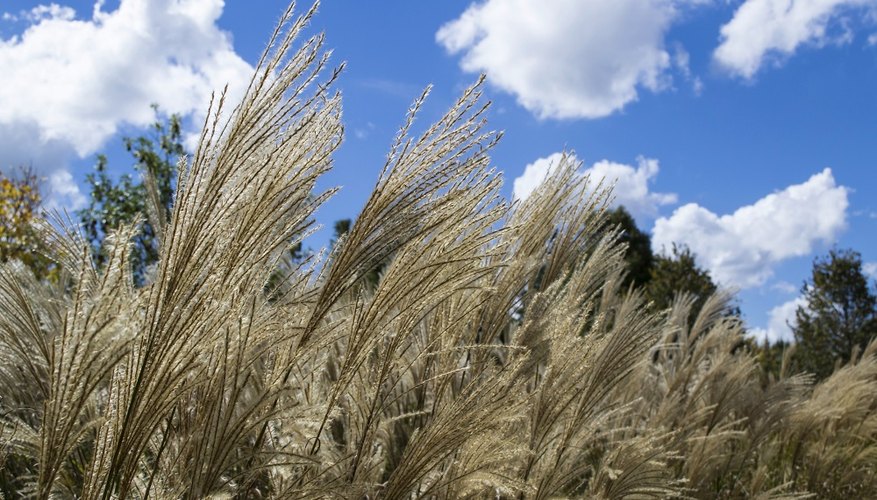Pampas grass, although used for ornamental purposes, isn't a very friendly plant. In some geographical areas, pampas grass is an invasive weed that is hard to control. But of all the problems it causes--it has very sharp leaves, and the pollen count is high--skin allergies aren't a top concern. However, it is apt to affect nasal allergies.
Description
Pampas grass is a flowering grass that can reach a height of 3 to 4 metres (12 feet). Its soft, white flowers have a feathery appearance, but its leaves are a total contrast. According to the Hawkesbury Nepean Catchment Management Authority, the light green leaves, which can cover an entire stem, are "roughly serrated" and can cut skin.
Dangers
Because of the sharp leaves, pampas grass is considered a "harmful garden plant" by the Australia Department of Agriculture and Food. They state, aside from being an "irritant when touched, (the) sharp-edged leaves ... are an unseen danger that can cause serious lacerations." These are not allergic irritants. However, pampas grass contains a high pollen count that can affect people who suffer from seasonal allergies.
- Because of the sharp leaves, pampas grass is considered a "harmful garden plant" by the Australia Department of Agriculture and Food.
- However, pampas grass contains a high pollen count that can affect people who suffer from seasonal allergies.
Allergies
Pollen is often spread by wind and then inhaled by people. The Asthma and Allergy Foundation of America (AAFA) states, "Symptoms for seasonal rhinitis, also called hay fever, include sneezing, congestion, runny nose, itchiness in the nose, the roof of the mouth or throat, eyes and ears." Because pampas grass is a high allergen, the AAFA suggests keeping it out of your garden.
Uses
People are attracted to pampas grass and like to plant it as a lawn ornament. However, its tendency to spread rapidly doesn't make it a practical garden addition. The Global Invasive Species Database states it is better planted as a windbreak, beside highways or in commercial industrial landscapes. It has also been used as "fodder for cattle."
- People are attracted to pampas grass and like to plant it as a lawn ornament.
- The Global Invasive Species Database states it is better planted as a windbreak, beside highways or in commercial industrial landscapes.
Warnings
There are some areas in the world where pampas grass is a problem, including New Zealand, Hawaii, Texas and Australia. Each plant has the capability of producing 100,000 seeds each, making it very aggressive. According to the Global Invasive Species Database, its dense growth excludes other plants from surviving; the sharp leaves prevent areas it's in to be used for recreation. Also, it forms thick colonies that become fire hazards.
- There are some areas in the world where pampas grass is a problem, including New Zealand, Hawaii, Texas and Australia.
- According to the Global Invasive Species Database, its dense growth excludes other plants from surviving; the sharp leaves prevent areas it's in to be used for recreation.
Management
When managing pampas grass, you must wear long trousers, long-sleeved shirts and leather gloves to prevent injury from the leaves. Smaller plants can be hand-pulled. When pulling taller plants, double-bag the heads to prevent the spread of the seeds. You must use machinery to extract them from the ground. Chemical spraying is occasionally done from the air when mechanical removal isn't possible.
- When managing pampas grass, you must wear long trousers, long-sleeved shirts and leather gloves to prevent injury from the leaves.
- When pulling taller plants, double-bag the heads to prevent the spread of the seeds.
Care
If you receive a cut from pampas grass, treat it as you would any laceration. Wash it with warm soap and water, apply an antibiotic ointment and wrap it with a bandage.
